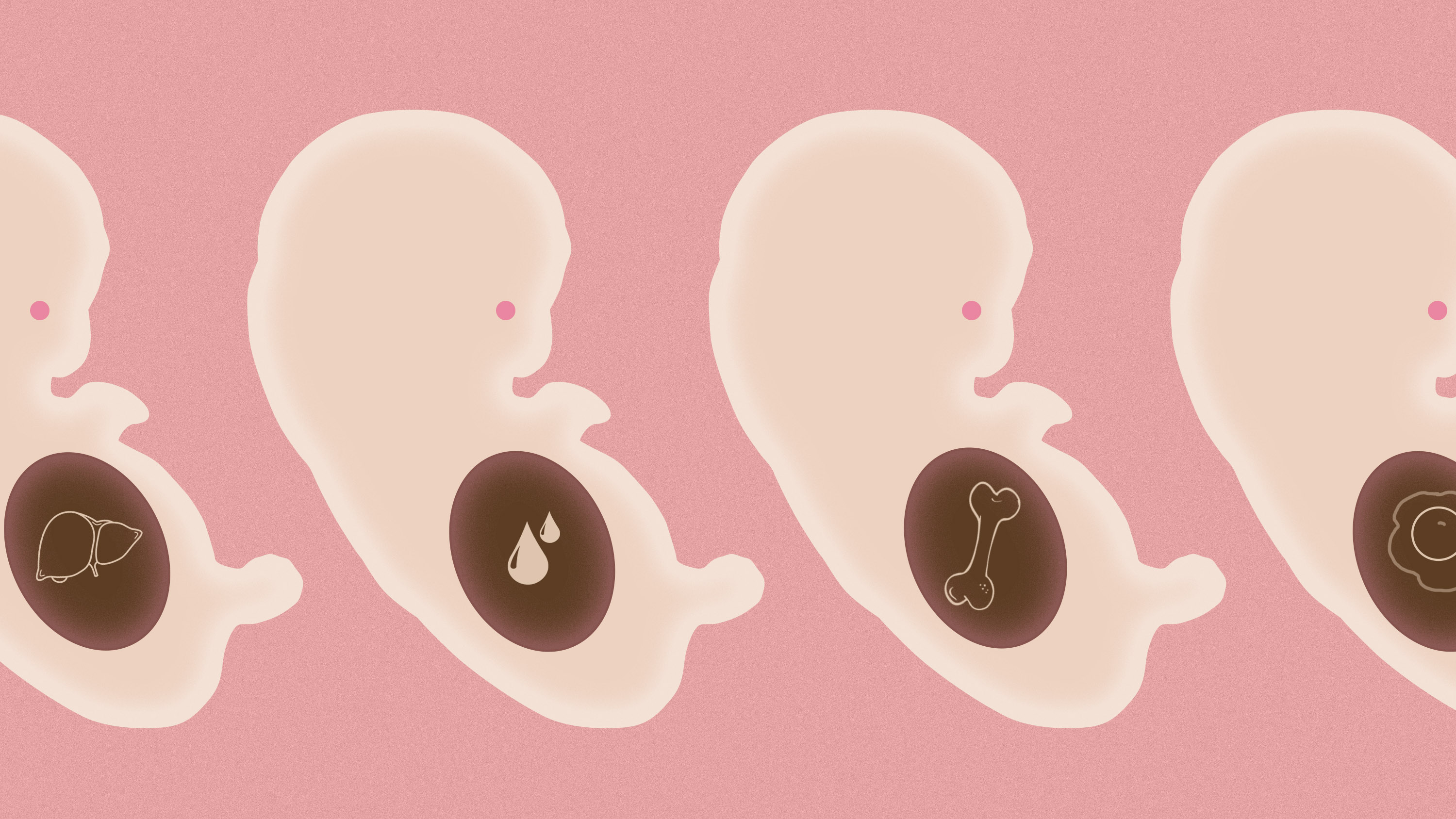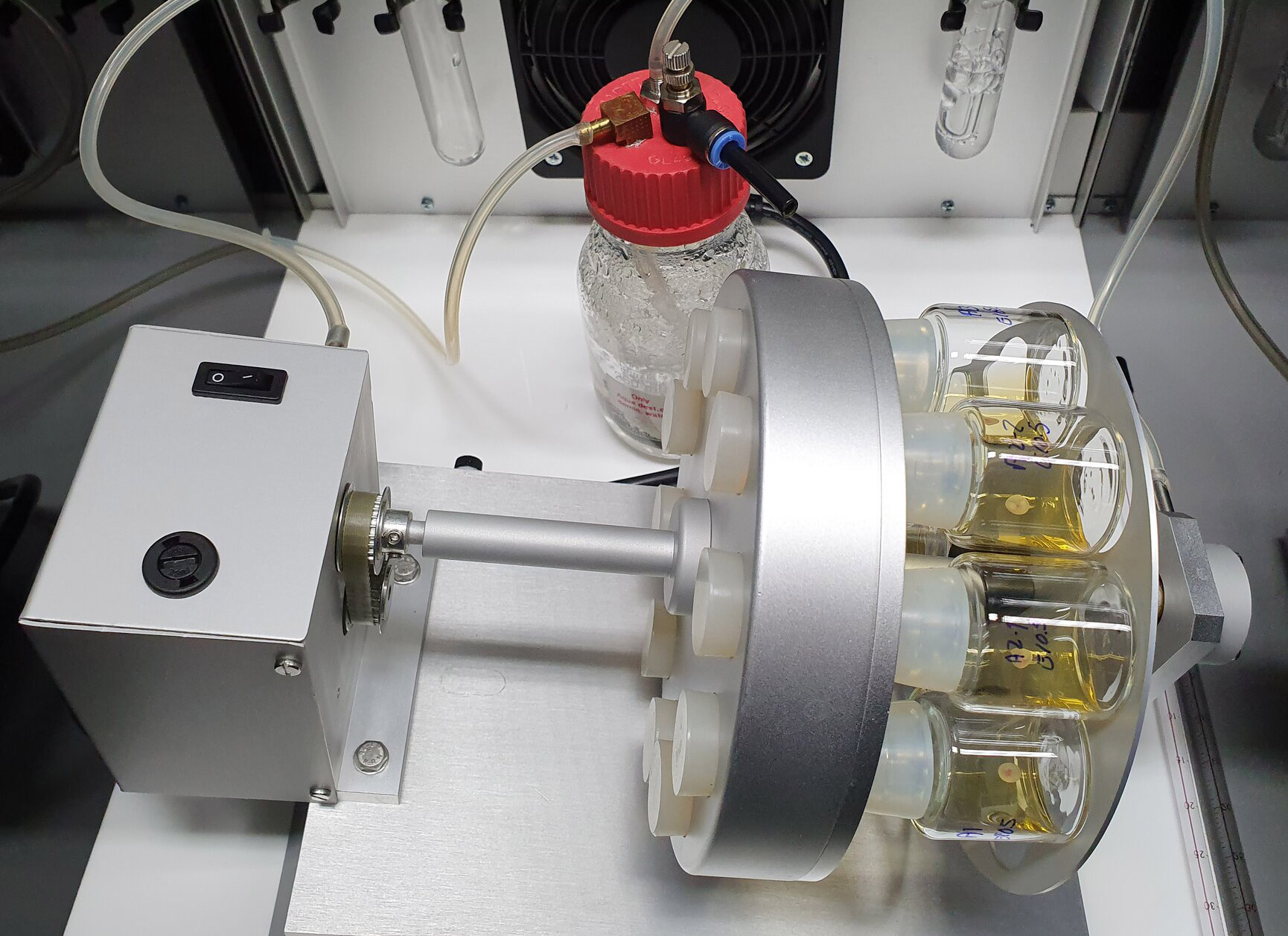This startup wants to copy you into an embryo for organ harvesting
With plans to create realistic synthetic embryos, grown in jars, Renewal Bio is on a journey to the horizon of science and ethics.

In a search for novel forms of longevity medicine, a biotech company based in Israel says it intends to create embryo-stage versions of people in order to harvest tissues for use in transplant treatments.
The company, Renewal Bio, is pursuing recent advances in stem-cell technology and artificial wombs demonstrated by Jacob Hanna, a biologist at the Weizmann Institute of Science in Rehovot. Earlier this week, Hanna showed that starting with mouse stem cells, his lab could form highly realistic-looking mouse embryos and keep them growing in a mechanical womb for several days until they developed beating hearts, flowing blood, and cranial folds.
It’s the first time such an advanced embryo has been mimicked without sperm, eggs, or even a uterus. Hanna’s report was published in the journal Cell on Monday.
“This experiment has huge implications,” says Bernard Siegel, a patient advocate and founder of the World Stem Cell Summit. “One wonders what mammal could be next in line.”
The answer is humans. Hanna tells MIT Technology Review he is already working to replicate the technology starting with human cells and hopes to eventually produce artificial models of human embryos that are the equivalent of a 40- to 50-day-old pregnancy. At that stage basic organs are formed, as well as tiny limbs and fingers.
“We view the embryo as the best 3D bio printer,” says Hanna. “It’s the best entity to make organs and proper tissue.”
Researchers can already print or grow simple tissues, like cartilage or bone, but making more complex cell types and organs has proved difficult. An embryo, however, starts building the body naturally.
“The vision of the company is ‘Can we use these organized embryo entities that have early organs to get cells that can be used for transplantation?’ We view it as perhaps a universal starting point,” says Hanna.
Embryonic blood cells might be collected, multiplied, and transferred to an elderly person in order to reboot the immune system. Another concept is to grow embryonic copies of women with age-related infertility. Researchers could then collect the model embryo’s gonads, which could be further matured, either in the lab or via transplant into the woman’s body, to produce youthful eggs.
The startup, funded so far with seed capital from the venture firm NFX, has been briefing other investors, and its pitch materials state that its mission is “renewing humanity—making all of us young and healthy.”
Now humans
Renewal Bio’s precise technical plan remains under wraps, and the company’s website is just a calling card. “It’s very low on details for a reason. We don’t want to overpromise, and we don’t want to freak people out,” says Omri Amirav-Drory, a partner at NFX who is acting as CEO of the new company. “The imagery is sensitive here.”
Some scientists say it will be difficult to grow human embryo models to an advanced stage and that it would be better to avoid the controversy raised by imitating real embryos too closely.
“It’s absolutely not necessary, so why would you do it?” says Nicolas Rivron, a stem-cell scientist at the Institute of Molecular Biotechnology in Vienna. He argues that scientists should only create “the minimal embryonic structure necessary” to yield cells of interest.
For his part, Amirav-Drory says he hasn’t seen a technology with so much potential since CRISPR gene-editing technology first emerged. “The ability to create a synthetic embryo from cells—no egg, no sperm, no uterus—it’s really amazing,” he says. “We think it can be a massive, transformative platform technology that can be applied to both fertility and longevity.”
Mechanical womb
To create the succession of breakthroughs, Hanna’s lab has been combining advanced stem-cell science with new types of bioreactors.
A year ago, the stem-cell specialist first showed off a “mechanical womb” in which he managed to grow natural mouse embryos outside of a female mouse for several days. The system involves spinning jars that keep the embryos bathed in nutritious blood serum and oxygen.

In the new research published this week, Hanna used the same mechanical womb, but this time to grow look-alike embryos created from stem cells.
Remarkably, when stem cells are grown together in specially shaped containers, they will spontaneously join and try to assemble an embryo, producing structures that are called embryoids, blastoids, or synthetic embryo models. Many researchers insist that despite appearances, these structures have limited relation to real embryos and zero potential to develop completely.
By adding these synthetic mouse embryos to his mechanical womb, however, Hanna managed to grow them further than ever before, to the point where hearts started beating, blood began moving, and there was the start of a brain and a tail.
“The embryos really look great,” says Hanna, whose report this week provoked awe among other scientists. “They are really, really similar to natural embryos.” Analyses show the synthetic versions are about 95% similar to normal mouse embryos, based on the mix of cell types inside each.
Even so, techniques for growing synthetic embryos remain inefficient. Fewer than 1 in 100 attempts to mimic a mouse embryo was successful, and even the model embryos that developed for the longest time eventually suffered abnormalities, including heart problems, perhaps because they couldn’t grow any further without a proper blood supply.
Mini-Me
In a next set of experiments, Hanna is using his own blood or skin cells (and those of a few other volunteers) as the starting point for making synthetic human embryos. It means his lab could soon be swimming in hundreds or thousands of tiny mini-mes—all genetic clones of himself.
Hanna is not troubled by the idea. Despite the startling fact that he’s able to mimic the beginnings of mammals in test tubes, he views these as entities without a future. They’re probably not viable, he says. Plus, right now there is no way to graduate from jar life to real life. Without a placenta and an umbilical cord connected to a mother, no synthetic embryo could survive if transplanted to a uterus.
“We are not trying to make human beings. That is not what we are trying to do.” says Hanna. “To call a day-40 embryo a mini-me is just not true.”
Still, as this technology progresses, there could be debate as to whether synthetic embryos have any rights—or if they can ethically be used as fodder for science and medicine. In the US, the National Institutes of Health has, in some cases, declined to fund studies on synthetic embryos that it believes would be too close to the real thing.
Although Hanna doesn’t think an artificial embryo made from stem cells and kept in a lab will ever count as a human being, he has a contingency plan to make sure there is no confusion. It’s possible, for instance, to genetically engineer the starting cells so the resulting model embryo never develops a head. Restricting its potential could help avoid ethical dilemmas. “We think this is important and have invested a lot in this,” says Hanna. Genetic changes can be made that lead to “no lungs, no heart, or no brain.”
The new startup, Renewal, has already hired some of Hanna’s students and licensed his technology from the Weizmann Institute. It’s going to begin spending money improving the incubators, developing sensors to track the embryoids as they develop, and coming up with ways to extend their survival time in the lab.
Amirav-Drory says the company is at such an early stage that it is still learning what the technology could be used for—and which applications are the most promising. He and Hanna, who is Renewal’s scientific founder, have been approaching other scientists and doctors to learn what they would do, if they had access to large numbers of synthetic embryos developed for days, or even weeks.
“We’ve been asking people, ‘Imagine if we can get to this or that milestone. What does it unlock?’ And people’s eyes light up,” he says.
Deep Dive
Biotechnology and health
How scientists traced a mysterious covid case back to six toilets
When wastewater surveillance turns into a hunt for a single infected individual, the ethics get tricky.
An AI-driven “factory of drugs” claims to have hit a big milestone
Insilico is part of a wave of companies betting on AI as the "next amazing revolution" in biology
The quest to legitimize longevity medicine
Longevity clinics offer a mix of services that largely cater to the wealthy. Now there’s a push to establish their work as a credible medical field.
There is a new most expensive drug in the world. Price tag: $4.25 million
But will the latest gene therapy suffer the curse of the costliest drug?
Stay connected
Get the latest updates from
MIT Technology Review
Discover special offers, top stories, upcoming events, and more.